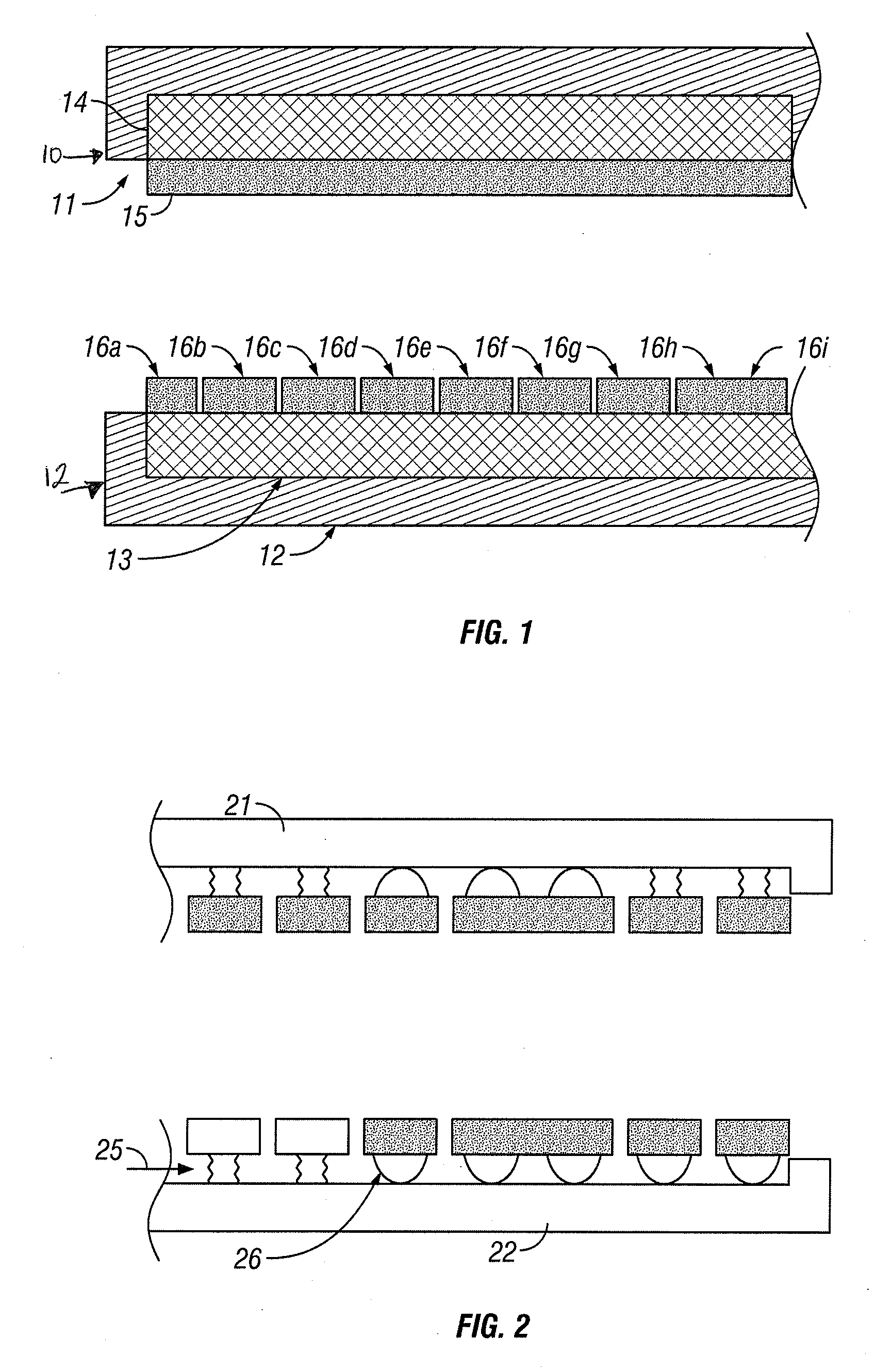Method and Apparatus for Surgical Electrocautery
a technology of electrocautery and surgical equipment, applied in the field of medical devices, can solve the problems of inconsistent arterial sealing and tissue cauterization, inconvenient use, inconsistent results, etc., and achieve the effect of effective electrocautery sealing
- Summary
- Abstract
- Description
- Claims
- Application Information
AI Technical Summary
Benefits of technology
Problems solved by technology
Method used
Image
Examples
first embodiment
[0013]FIG. 1 is a side view of an electrocautery device according to the invention.
[0014]The invention may comprise a fluid filled sac. The fluid may comprise, for example, a liquid, such as saline or Ringer's solution, or another biocompatible liquid or gel. Biocompatibility is desired due to the potential for rupture of the liquid or gel-containing portion of the inventive sac. One or more electrodes are mounted to the liquid filled sac. The sac, or balloon, can either be pre-filled with liquid or gel, or filled once it has been delivered to the site at which the electrocautery (electrosealing) is to be performed. Thus, the amount of liquid or gel contained in the sac may be adjusted as desired for the application to which the device is put. The sac itself may be made from any biocompatible material, such as a surgical rubber or vinyl material, as is known in the art. The material should also be non-conductive and heat resistant. Further, the sac may be either a flexible, leak pro...
second embodiment
[0025]FIG. 2 is a side view of second embodiment of an electrocautery device according to the invention. This embodiment of the invention comprises a pair of jaws 21, 22, as above, and approximates the desired results mechanically by using springs, which may be, for example, coil springs 25 or leaf springs 26 (one example shown), or a combination thereof (as shown in FIG. 2), to effect compliance of the electrodes to the tissue. Those skilled in the art will appreciate that other types of springs may be used as well. However, this embodiment of the invention has similar limitations as that of an elastomer. The use of springs or elastomers may prove valuable in optimizing the distribution of force because the spring force is higher in areas where the springs are more compressed, such as in thicker tissue regions which are harder to cauterize. To allow control over this effect, springs with different tension may be provided across the span of the jaws, such that stronger or shorter sp...
PUM
 Login to View More
Login to View More Abstract
Description
Claims
Application Information
 Login to View More
Login to View More - R&D
- Intellectual Property
- Life Sciences
- Materials
- Tech Scout
- Unparalleled Data Quality
- Higher Quality Content
- 60% Fewer Hallucinations
Browse by: Latest US Patents, China's latest patents, Technical Efficacy Thesaurus, Application Domain, Technology Topic, Popular Technical Reports.
© 2025 PatSnap. All rights reserved.Legal|Privacy policy|Modern Slavery Act Transparency Statement|Sitemap|About US| Contact US: help@patsnap.com


